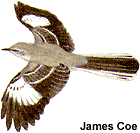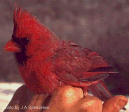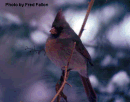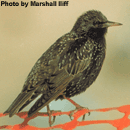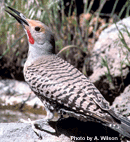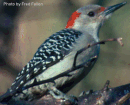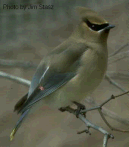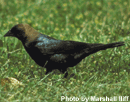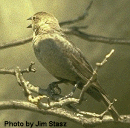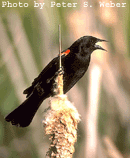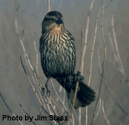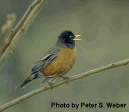
Cool Fact- Robins are the largest members of the thrush family in North America. Although most of their diet is fruit they can often be seen playing tug-of-war trying to get earthworms out of the ground. They find these earthworms by sight.
Field Marks- Adult Robins show orangey coloring over the whole breast, a slate-grey back, and an almost black head.
Occurrence Status- Resident (rarer in winter)


